To install a car seat rear-facing, follow these steps: First, place the car seat in the back seat and ensure it is securely strapped in. Next, angle the car seat at a recline position according to the manufacturer’s instructions.
Finally, secure the car seat using the seat belt or LATCH system, making sure it is tight and does not move more than one inch in any direction. Installing a car seat rear-facing is an essential step in ensuring the safety of your child while traveling.
It is crucial to follow proper installation guidelines to provide maximum protection. We will discuss the step-by-step process of how to install a car seat rear-facing in an accurate, concise, and easy-to-understand manner. By adhering to the manufacturer’s instructions and taking necessary precautions, you can ensure your child’s safety during car journeys.
Understanding The Benefits Of Rear-Facing Car Seats
Statistics and Research Supporting the Use of Rear-Facing Car Seats for Infants and Toddlers
Car accidents are a leading cause of injury and death among young children. As a parent, ensuring your child’s safety during car rides is of utmost importance. One highly recommended safety measure is to install a rear-facing car seat for infants and toddlers. But what makes rear-facing car seats so beneficial? Let’s explore the statistics and research that support their use.
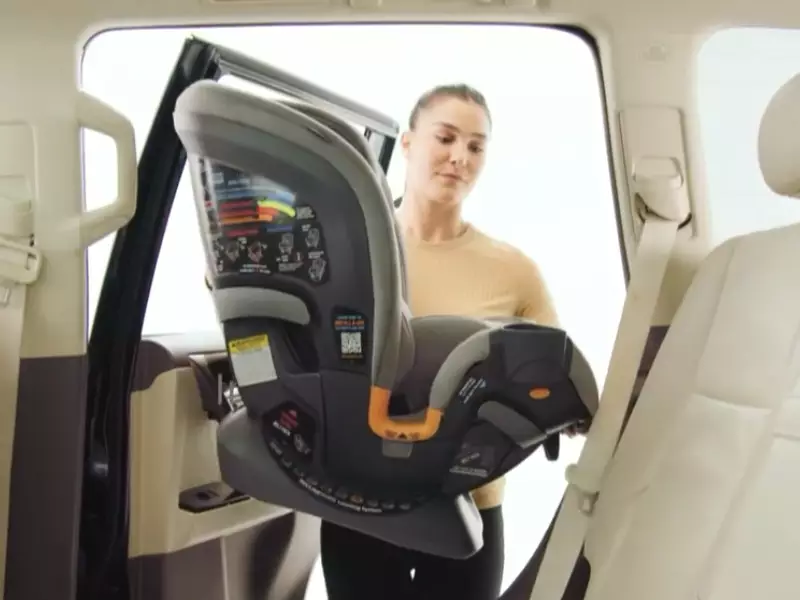
When it comes to protecting young passengers, the numbers don’t lie. Research and crash test data consistently show that rear-facing car seats provide the best protection for infants and toddlers. According to a study conducted by the National Highway Traffic Safety Administration (NHTSA), rear-facing car seats have been shown to reduce the risk of fatal injury by as much as 71% for infants and 54% for toddlers.
Key Safety Benefits of Rear-Facing Car Seats
The safety benefits of rear-facing car seats are numerous and significant. Here are some key factors that make them the preferred choice for protecting young children:
- Proper Head and Neck Support: Infants and toddlers have developing muscles and a fragile skeletal structure, especially in their neck and head area. Rear-facing car seats are specifically designed to support the head, neck, and spine in the event of a crash, reducing the risk of severe injuries.
- Impact Absorption: Rear-facing car seats excel in distributing the force of a collision evenly across the seat. This reduces the impact on a child’s body and helps minimize the risk of serious injuries, such as spinal cord damage or traumatic brain injuries.
- Enhanced Protection for Vulnerable Body Parts: In a rear-facing position, a child’s back, neck, and head are better protected due to the car seat’s design. In the event of a sudden stop or crash, the seat absorbs the energy, reducing the strain on sensitive body parts.
- Less Risk of Ejection: One of the most significant risks in car accidents is the ejection of occupants from the vehicle. Rear-facing car seats offer superior protection by securely holding the child within the seat, significantly reducing the chance of ejection.
- Age-Appropriate Safety Features: Rear-facing car seats are specifically designed with age-appropriate safety features. From adjustable harnesses to side-impact protection, these seats are built to cater to the unique needs and vulnerabilities of young children.
Why Rear-Facing is the Recommended Position for Young Children
The recommendation for rear-facing car seats is based on scientific research, crash test simulations, and real-world accident data. The following factors contribute to why rear-facing is the preferred position for young children:
- Underdeveloped Muscles: Infants and toddlers have yet to develop the necessary muscle strength to withstand the impact of a crash in a forward-facing position. Placing them in a rear-facing car seat supports their vulnerable body parts, particularly their neck and head, reducing the risk of severe injuries.
- Crash Forces: During a collision, the force exerted on a child in a forward-facing car seat can strain their developing neck and spine. Rear-facing car seats are designed to distribute these forces more evenly, minimizing the risk of injury.
- Safety Standards: Regulatory bodies and organizations such as NHTSA, the American Academy of Pediatrics (AAP), and the World Health Organization (WHO) all recommend keeping children rear-facing until they outgrow the height and weight limits set by the car seat manufacturer. Adhering to these guidelines ensures maximum safety for young passengers.
It is essential for parents and caregivers to understand the importance of rear-facing car seats to protect their children while traveling. By prioritizing the safety benefits and following the recommendations, parents can provide their precious passengers with the highest level of protection during their car journeys.
Selecting The Right Rear-Facing Car Seat For Your Child
Choosing the right rear-facing car seat for your child is a crucial step in ensuring their safety on the road. Rear-facing car seats provide the best protection for young children, as they offer maximum support to their undeveloped necks and spines. In this article, we will guide you through the process of selecting the perfect rear-facing car seat for your little one, considering age and weight guidelines, different types available in the market, and important features to look out for.
Age and Weight Guidelines for Rear-Facing Car Seats
When it comes to rear-facing car seats, it is essential to follow the recommended age and weight guidelines to ensure your child’s safety. The American Academy of Pediatrics (AAP) recommends that infants and toddlers should ride in a rear-facing car seat until at least the age of 2, or until they reach the height and weight limits specified by the car seat manufacturer.
To find the appropriate rear-facing car seat based on your child’s age and weight, refer to the manufacturer’s guidelines mentioned in the car seat’s manual. It is important to note that each car seat has different weight and height limits, so make sure to check these specifications thoroughly.
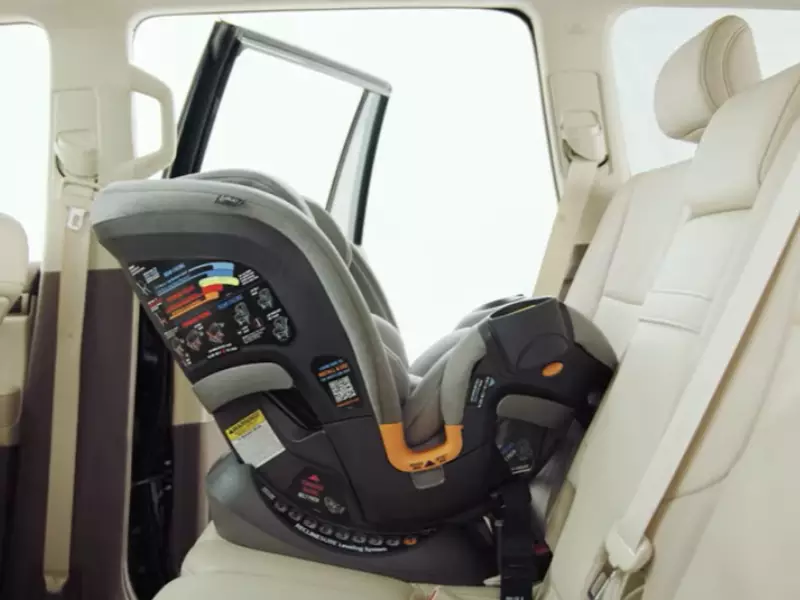
Different Types of Rear-Facing Car Seats Available in the Market
When shopping for a rear-facing car seat, you will come across various types tailored to suit different age groups and needs. The most common types of rear-facing car seats available in the market include:
- Infant Car Seats: Designed for babies from birth to around 35 pounds, infant car seats provide a secure and cozy environment for your little one. These seats are usually portable, allowing you to detach them from the base and snap them onto a stroller.
- Convertible Car Seats: As the name suggests, convertible car seats can be used both rear-facing and forward-facing. They are suitable for infants and can be adjusted to accommodate toddlers up to a certain weight limit. Convertible car seats offer convenience and versatility, allowing your child to use the same seat for an extended period.
- All-in-One Car Seats: Similar to convertible car seats, all-in-one car seats can be used in various configurations. They typically include a rear-facing position for infants and can be transformed into forward-facing or booster seats as your child grows. All-in-one car seats provide a cost-effective option for long-term use.
Important Features to Consider When Choosing a Rear-Facing Car Seat
When selecting a rear-facing car seat for your child, it is crucial to consider certain features that enhance safety and comfort. Here are some key factors to keep in mind:
- Adjustable Harness and Headrest: Look for a car seat with an adjustable harness and headrest to accommodate your child’s growth. This ensures a secure fit and provides proper support as your little one develops.
- Side-Impact Protection: Opt for a car seat with built-in side-impact protection, such as energy-absorbing foam or reinforced side wings. This feature enhances protection in the event of a collision from the side.
- Easy Installation: Choose a car seat that is easy to install and provides clear instructions for securing it correctly in your vehicle.
- Washable Covers: Babies and toddlers are prone to spills and accidents, so consider a car seat with removable and machine-washable covers, making it easier to keep clean.
- Stroller Compatibility: If you prefer the convenience of a travel system, check if the car seat is compatible with your chosen stroller. This allows you to transition smoothly between car rides and stroller walks without disturbing your sleeping child.
By considering these age and weight guidelines, exploring the different types of rear-facing car seats available, and paying attention to important features, you can select a car seat that meets your child’s needs while prioritizing their safety on the road.
Step-By-Step Guide: How To Properly Install A Rear-Facing Car Seat
Installing a car seat rear-facing is essential to ensure the safety of your child during car rides. While it may seem like a daunting task, with the right information and step-by-step guide, the process can be made much easier. In this article, we will provide you with a comprehensive step-by-step guide on how to properly install a rear-facing car seat. Let’s get started!
Pre-installation Checklist and Gathering the Necessary Tools
Before you begin installing your rear-facing car seat, it’s important to go through a pre-installation checklist to ensure you have everything you need and are ready to proceed. Here is a checklist to help you:
- Read the car seat’s instruction manual thoroughly to familiarize yourself with its specific installation guidelines.
- Check the expiration date of the car seat to ensure it is still within its usable period.
- Inspect the car seat for any damages or defects. If you notice any, do not proceed with installation and contact the manufacturer for further instructions.
- Ensure that your vehicle has a suitable rear-facing installation position with the necessary seat belts or LATCH anchors.
Once you have completed the pre-installation checklist, gather the necessary tools for the installation. These may include:
- Car seat base
- Car seat
- Seat belt or LATCH system
- Towel or pool noodle (for recline angle adjustment)
- Car’s manual
- Car seat instruction manual
Having these tools on hand will ensure a smooth installation process.
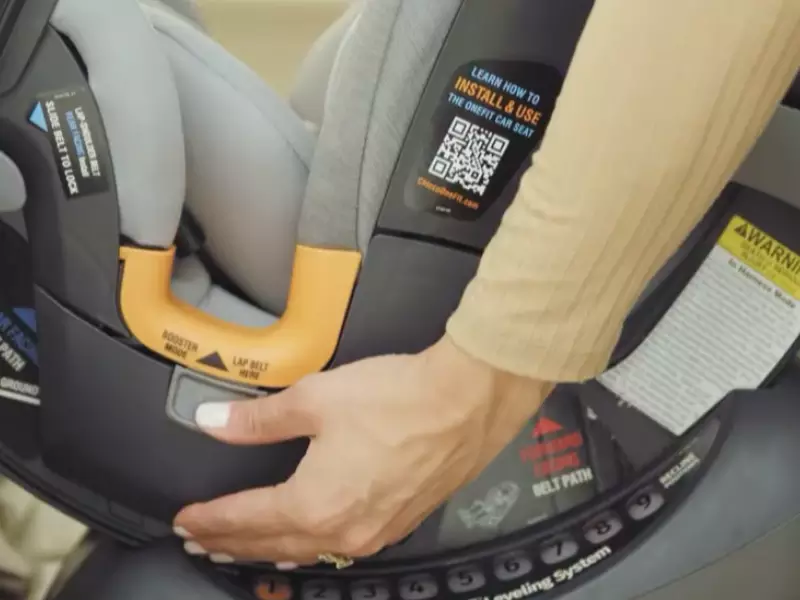
Ensuring a Secure Fit with Proper Seat Belt or LATCH Installation
Now that you have gathered the necessary tools, it’s time to move on to the actual installation process. The first step is to ensure a secure fit using either the seat belt or the LATCH system. The LATCH system stands for Lower Anchors and Tethers for Children, which allows for a more secure and convenient installation.
- Find the designated rear-facing installation position in your vehicle. This is usually indicated by labels or symbols.
- Place the car seat within the designated position and locate the LATCH anchors or the seat belt buckle.
- If using the LATCH system, attach the lower anchor connectors to the LATCH anchors in your vehicle. Apply firm pressure to ensure they are securely locked.
- For seat belt installation, thread the seat belt through the appropriate slots on the car seat, following the car seat’s instruction manual.
- Fasten the seat belt by buckling it and ensuring it is tightly secured. Remove any excess slack from the belt.
- Now, apply a strong force to the car seat and try to move it side to side and back and forth. If it moves more than an inch in any direction, repeat the installation process to achieve a tighter fit.
By following these steps, you will ensure a secure fit of your car seat using either the seat belt or LATCH installation method.
Adjusting the Car Seat’s Recline Angle for Optimal Safety
One critical aspect of rear-facing car seat installation is adjusting the seat’s recline angle. This is necessary to provide optimal safety and comfort for your child. Here’s how you can adjust the recline angle:
- Refer to the car seat’s instruction manual for the recommended recline angle specific to your child’s weight and age.
- Place a towel or a pool noodle under the car seat’s base to achieve the proper recline angle, if necessary.
- Check the level indicators on the car seat to ensure it is at the correct recline angle.
- Adjust the recline angle by gradually adding or removing padding until the car seat is level and follows the manufacturer’s guidelines.
It’s important to note that the recline angle may vary depending on your car seat model, so always refer to the instruction manual for precise instructions.
By following these step-by-step instructions, you can ensure a proper rear-facing car seat installation. The safety of your child is of utmost importance, so invest the time and effort to properly install the car seat. With the knowledge gained from this guide and adherence to the manufacturer’s instructions, you can travel with peace of mind knowing that your little one is secure and protected.
Checking For Correct Installation And Maximizing Safety
When it comes to installing a car seat rear-facing, verifying proper installation and maximizing safety are of paramount importance. This crucial step ensures that your precious little one is securely strapped in, providing them with the utmost protection during car rides. In this section, we will discuss how to perform the “inch” or “pinch” test to verify proper installation, adjust the car seat’s harness and straps for a secure fit, and identify common installation mistakes to avoid. Let’s dive into these essential steps to help keep your child safe on the road.
Verifying Proper Installation with the “Inch” or “Pinch” Test
Verifying that your car seat is correctly installed is crucial for your child’s safety. One effective way to ensure a secure installation is by performing the “inch” or “pinch” test. Simply follow these steps:
- Tightly secure the car seat using either the vehicle’s seat belt or the LATCH system, depending on the manufacturer’s instructions.
- Once the car seat is secure, try to wiggle it side to side and front to back. If it moves more than an inch in either direction, it may not be properly installed.
- If the car seat seems loose, or if you are unsure, perform the “pinch” test. Using your thumb and index finger, pinch the car seat’s webbing near the child’s collar bone. If you can pinch any excess slack, the straps may need further tightening.
Adjusting the Car Seat’s Harness and Straps for a Secure Fit
The harness and straps play a critical role in securing your child within the car seat. To ensure a proper and secure fit, follow these guidelines:
- Place your child in the car seat and fasten the harness. The straps should be positioned at or below your child’s shoulders.
- Ensure the harness straps lie flat and are not twisted.
- Tighten the harness until it is snug. You should be able to fit only one finger between your child’s collarbone and the harness.
- Make sure the chest clip is positioned at armpit level, providing a secure fit across the chest.
- Double-check that the harness is neither too loose nor excessively tight. It should allow your child to move comfortably while still providing optimal safety.
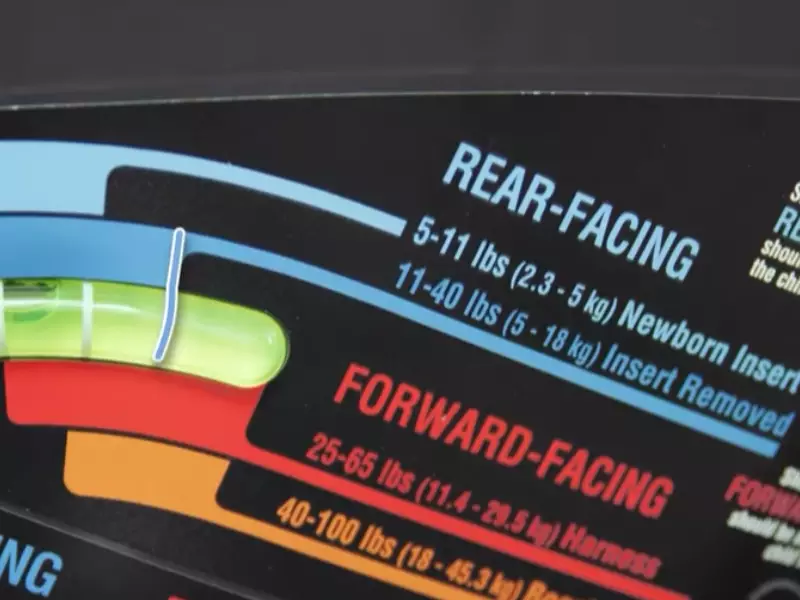
Identifying Common Installation Mistakes to Avoid
To maximize safety, it’s essential to avoid common installation mistakes. By staying vigilant and being aware of these potential errors, you can ensure a secure installation for your car seat:
| Mistake | Solution |
|---|---|
| Using both the LATCH system and the seat belt simultaneously | Choose either the LATCH system or the seat belt for installation. Check your car seat’s manual for specific instructions. |
| Not properly tightening the straps | Ensure the straps are snug, allowing only one finger to fit between your child’s collarbone and the harness. |
| Leaving too much slack in the harness straps | Eliminate excess slack by adjusting the harness until it fits snugly against your child’s body. |
| Using an expired or previously involved in a crash car seat | Always double-check the expiration date of your car seat and avoid using one that has been involved in any crash. |
| Not following the car seat manufacturer’s instructions | Carefully read the car seat’s manual and adhere to the manufacturer’s guidelines for installation. |
By adhering to the correct installation procedures and avoiding common mistakes, you can ensure that your car seat is properly secured and that your precious cargo is protected to the highest degree. Never compromise when it comes to your child’s safety on the road, and always remember to perform regular checks to maintain a secure installation.
Additional Tips For Enhanced Safety And Comfort
When it comes to installing a car seat rear-facing, the safety and comfort of your child are of utmost importance. Apart from following the standard installation guidelines, there are a few additional tips that can further enhance the safety and comfort of your little one. In this section, we will discuss three key areas that can make a difference – positioning the car seat within the vehicle for maximum protection, handling car seat accessories and additional padding, and addressing common concerns and myths surrounding rear-facing car seats.
Positioning the car seat within the vehicle for maximum protection
Proper placement of the car seat within your vehicle is critical to ensure maximum protection for your child. Follow these guidelines:
- Place the rear-facing car seat in the back seat of the vehicle. This is the safest location for a child to ride.
- Ensure that the car seat is installed tightly, with minimal movement from side to side or front to back. You can use the car seat’s built-in LATCH system or the vehicle’s seat belt to secure it in place.
- Avoid installing the car seat near active airbags. If your vehicle has side airbags, make sure there is enough space between the car seat and the airbag.
- Use the angle indicator on the car seat to adjust the recline angle. This will ensure that your child’s head stays supported and their airway remains open.
Handling car seat accessories and additional padding
While it may be tempting to use additional accessories and padding to make the car seat more comfortable, it’s important to follow these guidelines:
- Avoid using after-market accessories that are not recommended by the car seat manufacturer. These can interfere with the proper functioning of the car seat and compromise its safety.
- Do not use any additional padding or cushions that did not come with the car seat. The car seat is designed to provide the necessary protection without any extra padding.
- Ensure that the straps of the car seat are snug against your child without any bulky clothing or blankets. Bulky clothing can compress in a crash and create slack in the harness, reducing its effectiveness.
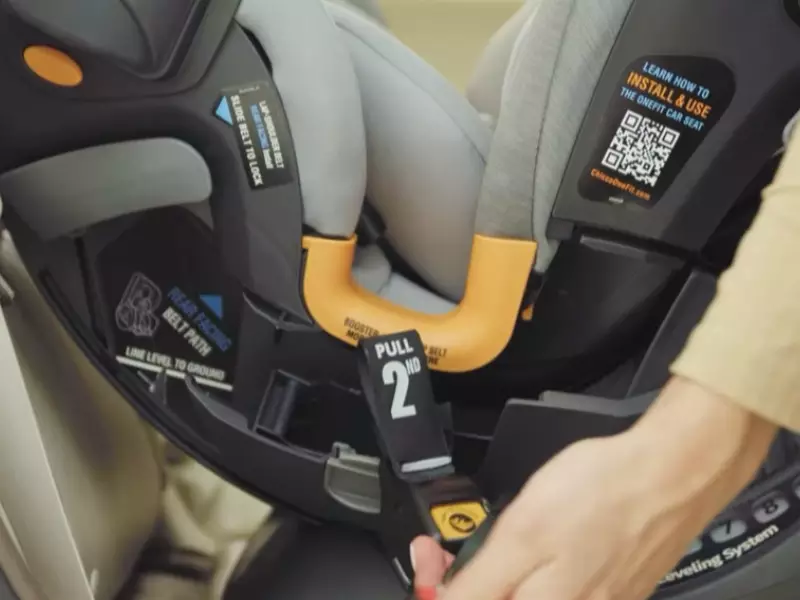
Addressing common concerns and myths surrounding rear-facing car seats
There are several misconceptions and concerns surrounding rear-facing car seats. Let’s debunk a few of them:
- “My child’s legs will be cramped in a rear-facing car seat.” This is not true! Rear-facing car seats are designed to accommodate your child’s leg position comfortably, and their legs can be bent or crossed without causing any harm.
- “Rear-facing car seats are only for infants.” Rear-facing car seats are suitable for children beyond infancy and can provide optimal protection until they reach the maximum height or weight limit allowed by the car seat manufacturer.
- “It’s safer to turn the car seat forward-facing once my child reaches a certain age.” The American Academy of Pediatrics recommends keeping your child in a rear-facing car seat for as long as possible, preferably until they reach the maximum limits of the seat.
By following these additional tips, you can ensure that your child’s car seat is installed correctly and provide them with enhanced safety and comfort during their rides. Remember to always refer to the car seat manufacturer’s instructions and your vehicle’s manual for specific installation guidelines.
Expert Recommendations For Extended Rear-Facing
Expert Recommendations for Extended Rear-Facing
When it comes to the safety of our children in the car, it’s crucial to follow the expert recommendations for extended rear-facing. Rear-facing car seats are designed to provide maximum protection for infants and young children, and recent research has shown that keeping kids rear-facing for as long as possible is the safest option. In this article, we will discuss the benefits of extended rear-facing, age and weight guidelines, and expert tips on encouraging older children to stay rear-facing for longer.
<Benefits of extended rear-facing beyond the minimum requirements>
Extended rear-facing offers numerous benefits that go beyond the minimum safety requirements set by regulatory agencies. By keeping your child rear-facing for an extended period, you provide them with:
1. Enhanced Head and Neck Protection:
- Rear-facing seats distribute crash forces evenly across the child’s back, reducing the risk of spinal injuries.
- The seat’s shell protects the head, neck, and spine, reducing the chance of severe head and neck injuries in the event of a collision.
2. Reduced Risk of Internal Injuries:
- During a crash, the seat’s cradle design absorbs impact, protecting delicate organs such as the brain, lungs, and liver.
- Extended rear-facing lowers the risk of organ damage and internal injuries.
3. Increased Safety in Side-Impact Collisions:
- Rear-facing car seats provide better protection in side-impact crashes due to their secure installation and structural design.
- Extended rear-facing minimizes the risk of injury during a side-impact collision, which is common on the road.
<Age and weight guidelines for extended rear-facing>
Knowing the appropriate age and weight guidelines for extended rear-facing can help parents make informed decisions about their child’s safety. Experts suggest the following guidelines:
| Age | Weight |
|---|---|
| Birth to 2 years | Up to 40 pounds |
| 2 to 4 years | Up to 50 pounds |
| 4 to 7 years | Up to 65 pounds |
Remember, these guidelines are just a general reference. It’s essential to check your car seat’s specific height and weight limits to ensure optimal safety for your child.
<Expert tips on encouraging older children to stay rear-facing for longer>
Transitioning older children to forward-facing can be challenging, but with expert tips, you can encourage them to continue rear-facing for longer periods:
- Lead by Example: If your child sees you wearing a seatbelt, they are more likely to follow suit.
- Explain the Benefits: Educating your child about the safety advantages of rear-facing may help them understand the importance of extended rear-facing.
- Motivate with Rewards: Consider using a reward system to incentivize your child to stay rear-facing. Small rewards or praise can make a significant difference.
- Choose Comfortable Car Seats: Invest in comfortable car seats with spacious legroom, providing a more pleasant rear-facing experience for your child.
- Make it Fun: Engage your child with interactive activities or toys during car rides to make rear-facing more enjoyable.
Remember, the longer you can keep your child rear-facing, the safer they will be on the road. By following these expert recommendations and guidelines, you’re taking critical steps towards ensuring their safety.
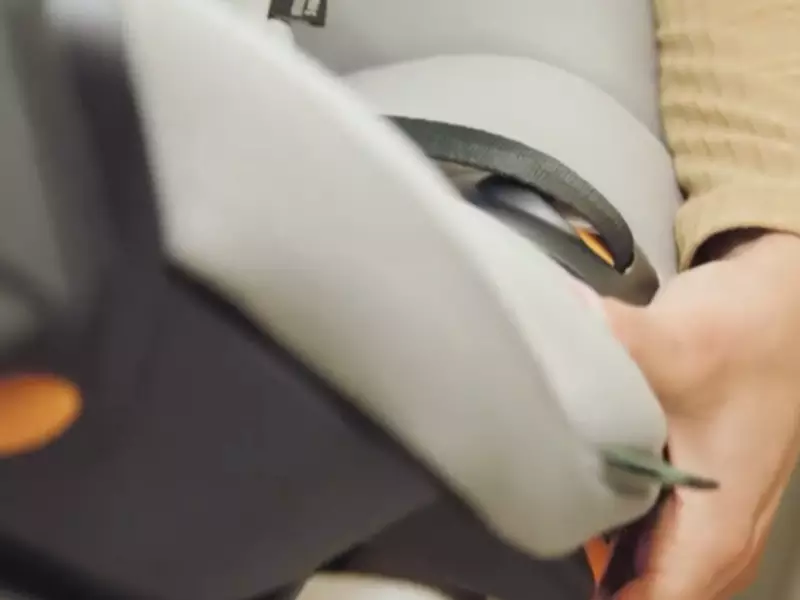
Staying Updated: Car Seat Safety Guidelines And Regulations
When it comes to the safety of your little one, staying updated on the latest car seat guidelines and regulations is of utmost importance. Installing a car seat correctly is vital to protecting your child in the event of a car accident. To ensure you are up to date with the most current information, it is essential to rely on trusted resources and organizations that provide comprehensive and reliable car seat safety information. Additionally, understanding the relevant laws and regulations in your region is crucial to ensure you are in compliance and keeping your child safe. Regular checks and maintenance of your car seat play a significant role in ensuring optimal safety. Let’s explore each of these aspects in more detail.
Resources and organizations that provide updated car seat safety information
When it comes to car seat safety, it is crucial to rely on reputable resources and organizations that provide up-to-date information. Here are some trusted sources you can consult:
| Resource/Organization | Website |
|---|---|
| American Academy of Pediatrics | https://www.aap.org/ |
| National Highway Traffic Safety Administration (NHTSA) | https://www.nhtsa.gov/ |
| Safe Kids Worldwide | https://www.safekids.org/ |
These organizations offer valuable resources and guidelines to help parents and caregivers make informed decisions regarding the selection, installation, and usage of car seats.
Understanding relevant laws and regulations in your region
Each region may have specific laws and regulations regarding car seat usage. It is essential to familiarize yourself with these regulations to ensure compliance and your child’s safety. Here are steps to understand the laws in your region:
- Research regional laws: Look for official government websites or local law enforcement websites that provide information on car seat regulations and requirements.
- Contact local authorities: Reach out to your local police department or transportation department for clarification on car seat laws specific to your area.
- Attend car seat safety workshops: Many organizations and local communities offer workshops that provide information on car seat safety and relevant laws. Participating in these workshops can offer valuable insights.
Importance of regular checks and maintenance for optimal car seat safety
Maintaining your car seat on a regular basis is crucial for optimal safety. Here are some key aspects to focus on:
- Regularly inspect straps, harnesses, and buckles for signs of wear and tear.
- Ensure the car seat is installed securely and does not move more than an inch in any direction.
- Check the expiration date of the car seat to ensure it is still safe for use.
- Follow the manufacturer’s instructions for cleaning the car seat and avoiding the use of harsh chemicals that could compromise its safety.
- Keep up with recalls: Stay informed about any recalls or safety notices issued by the manufacturer of your car seat model.
By regularly checking and maintaining your car seat, you can significantly reduce the risk of any safety issues and ensure your child is protected during every journey.
Ensuring Maximum Safety And Protection For Your Child
Installing a car seat rear-facing is a crucial step in providing maximum safety and protection for your child during car rides. Throughout this article, we have discussed the key points to keep in mind when installing a car seat in this position. By following the manufacturer’s instructions, you can ensure that the car seat is secured correctly and minimize any potential risks.
Recap of key points discussed throughout the article
Let’s take a moment to recap the key points we have covered:
- Start by choosing a car seat suitable for your child’s age, height, and weight. This will ensure the best possible fit and protection.
- Position the car seat rear-facing in the back seat of your vehicle, preferably in the center or behind the front passenger seat.
- Make sure to tightly secure the car seat using either the seat belt or the LATCH system, according to the manufacturer’s instructions.
- Verify that the car seat is at the correct recline angle, allowing your child’s head to stay safely positioned within the seat.
- Confirm that the harness straps are snug and positioned at or below your child’s shoulders, with no twists or slack.
- Regularly check and adjust the car seat’s tightness and positioning to ensure it remains secure during each trip.
Importance of following manufacturer instructions for proper installation
Proper installation is crucial for the effective functioning of the car seat and ensuring your child’s safety. Therefore, it is imperative to carefully read and strictly follow the manufacturer’s instructions when installing the car seat. These instructions are specifically designed for your car seat model and provide essential guidance on correct positioning, securing, and adjusting.
Failure to follow the manufacturer’s instructions can result in an improperly installed car seat, compromising its ability to protect your child in case of an accident. Each car seat model may have unique features and installation steps, so taking the time to thoroughly understand and execute the instructions is vital.
Final thoughts on keeping your child safe on the road
Ensuring the safety of your child on the road goes beyond just installing a car seat correctly. It involves adopting safe driving practices, such as obeying traffic laws, avoiding distractions, and maintaining a suitable driving speed. Additionally, regularly inspecting and maintaining your car seat will contribute to its longevity and effectiveness.
Remember, accidents can happen unexpectedly, but by taking proactive steps and following the proper installation guidelines for your car seat, you are providing the best protection for your child. Prioritizing their safety and well-being on every car ride is a responsibility that should never be compromised.
Frequently Asked Questions On How To Install A Car Seat Rear-Facing
Does A Rear Facing Car Seat Need To Be Anchored?
Yes, a rear facing car seat needs to be anchored for the safety of the child.
What Is The Best Position For A Rear Facing Car Seat?
The best position for a rear-facing car seat is in the back seat of the vehicle. Placing it in the center is ideal for maximum safety and protection.
Can Rear Facing Car Seat Go Behind Driver Or Passenger?
Yes, rear-facing car seats can be installed behind either the driver or passenger seat.
How Do You Install A Rear Facing Car Seat Without Anchors?
To install a rear-facing car seat without anchors, you can use the seat belt. Thread the seat belt through the car seat and buckle it. Pull the seat belt tight to secure the car seat snugly. Make sure the seat is reclined at the correct angle for your child’s safety.
Conclusion
Installing a car seat rear-facing is essential for the safety of your child during travel. By following the proper steps and ensuring a secure installation, you can provide a protected environment for your little one. Remember to read both your car seat and vehicle manual thoroughly, as each may have specific instructions.
Taking the time to install the car seat correctly will give you peace of mind, knowing you have taken an important step to ensure your child’s safety on the road.
